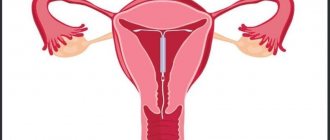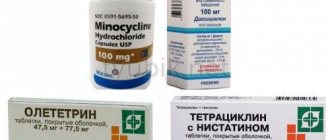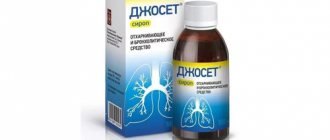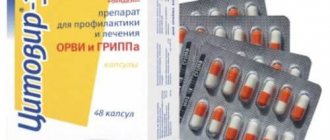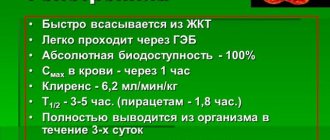Cinnarizine is a class IV calcium channel blocker with a predominant effect on cerebral vessels. Instructions for use explain how to properly take 25 mg tablets for the treatment of vascular disorders in adults, children (including infants and newborns) and during pregnancy. What Cinnarizine helps with, information on prices, analogues and patient reviews will also be presented in the article.
Release form and composition
The drug Cinnarizine is prepared in the dosage form of tablets for oral (oral) administration. They have a round shape, biconvex surface and white color.
The main active component of this drug is cinnarizine, its content in one tablet is 25 mg. The drug also contains additional compounds, which include:
- Wheat starch.
- Colloidal silicon dioxide.
- Lactose.
- Povidone K25.
- Magnesium stearate.
Cinnarizine tablets are packaged in blister packs of 50 pieces. The cardboard pack contains one blister of tablets, as well as instructions for use.
Instructions
Cinnarizine is indicated for children if symptoms of neurological disorders are observed. Infants can be given tablets in doses prescribed by a neurologist. In what cases are they prescribed? If a newborn's head grows disproportionately to the body, the child refuses to drink, he quickly develops strabismus, experiences frequent vomiting, and restless sleep. Such infants also experience increased excitability.
Cinnarizine is prescribed to newborns if the benefit outweighs the possible harm. The advantage of the medicine is that in the first months of the baby’s life it is able to stop the irreversible processes occurring in the central nervous system. Adverse reactions in children are minimal, since the dosage is usually small. The composition of the drug improves blood supply to the brain, nourishes cells, relieves excitability, and calms. It is recommended to engage in water procedures and therapeutic exercises while taking the pills. All this together normalizes the baby’s condition.
The dosage of the drug is determined by the doctor, taking into account the age and disease, its severity. Some experts argue that treating children under 12 years of age with Cinnarizine is strictly prohibited. However, in practice it is often prescribed, but only in combination and in a minimum dosage.
Many mothers are afraid to give Cinnarizine, even if it is prescribed by their doctor. Is it safe for children? The instructions for use do not contain complete information about whether this drug can be given to newborns or not. But for children over twelve years of age, it is recommended to relieve dizziness, but under the supervision of a neurologist. If the balance is disturbed, one tablet is taken after meals two or three times a day. Half an hour before traveling by car (weak vestibular apparatus), you should take one Cinnarizine tablet. In these cases, small children should not be given medicine without medical indications. The course of treatment for balance disorders is two to three weeks.
If you take the drug yourself (without a prescription), there is a risk of drowsiness, migraines, stomach pain, thirst and dry mouth, allergies, and jaundice. Young children may experience seizures.
Pharmacological characteristics
The drug has a positive effect on cerebral and cardiac circulation due to blocking calcium channels on cell membranes. In addition, Cinnarizine increases the ability of tissues to withstand the effects of oxygen starvation, improves blood microcirculation processes and increases the ability of red blood cells to change their shape without losing their properties.
During the use of the drug, there is a relief of spasms of vascular smooth muscles and a decrease in their susceptibility to drugs, as well as other substances that have vasoconstrictor effects. There is also a slight blocking of histamine receptors (located mainly in the central nervous system).
CINNARIZINE
- Compound
- Dosage form
- Pharmacological group
- Pharmacological properties
- Indications
- Contraindications
- Interaction with other drugs and other types of interactions
- Features of application
- Use during pregnancy and lactation
- The ability to influence the reaction rate when driving vehicles or other mechanisms
- Directions for use and doses
- Children
- Overdose
- Adverse reactions
- Best before date
- Storage conditions
- Package
- Vacation category
Pharmacological group.
Storage conditions.
List B. In a dry place, protected from light, out of reach of children, at a temperature not exceeding 25 °C.
50 or 100 tablets in orange glass jars or polymer jars.
Storage conditions
Keep out of the reach of children at a temperature of no more than 25 degrees Celsius.
Cinnarizine may cause false positive doping tests in athletes.
Release form and composition
Dosage form of Cinnarizine - tablets: round, flat-cylindrical, with a chamfer, with an R marking on one side (or without it); color – from white to white with a creamy tint (10 pcs. in blister packs, 1–5 or 10 packs in a cardboard pack; 10, 20, 30, 40, 50 or 100 pcs. in polymer/orange glass jars, 1 can in a cardboard box).
1 tablet contains:
- active ingredient: cinnarizine – 25 mg;
- auxiliary components: lactose, calcium stearate, povidone, aerosil, potato starch, vaseline oil.
increased individual sensitivity to cinnarizine and other components of the drug.
for adults
The tablets are washed down with plenty of water and swallowed whole, without biting or chewing. The time of administration is not important, although it is better to do it after a meal. The drug is absorbed slowly and is detected in tissues only a few hours after administration. The clinical result is noticeable after a course of treatment.
The standard regimen for cerebrovascular accidents includes taking 1 tablet of Cinnarizine three times a day. The maximum permitted dose is 9 tablets per day.
For peripheral circulation disorders, Cinnarizine is taken in higher doses, however, not exceeding the maximum. The doctor may prescribe the drug 2-3 tablets three times a day.
For imbalances, the single dose is 1 tablet.
To prevent poor health due to seasickness and air sickness, you need to take 1 tablet of Cinnarizine half an hour before your trip. When traveling for a long time, you can repeat the dose every 6 hours.
To prevent poor health due to seasickness and air sickness, you need to take 1 tablet of Cinnarizine half an hour before your trip.
Pharmacological properties
Pharmacokinetics
The drug is absorbed in the stomach and intestines. The maximum concentration in blood plasma after oral administration is 1-3 hours. The binding of cinnarizine to plasma proteins is 91%. Completely metabolized in the liver (via dealkylation). The half-life is 4 hours. It is excreted in the form of metabolites: 1/3 – by the kidneys and 2/3 – with feces – by the intestines.
Pharmacodynamics
Cinnarizine inhibits the contraction of vascular smooth muscle cells by blocking calcium channels. In addition, cinnarizine is a direct calcium antagonist and reduces the contractile activity of vasoactive substances such as norepinephrine and serotonin by blocking receptor-gated calcium channels. Blockade of calcium influx into cells is tissue selective and leads to a decrease in vasoconstriction without affecting blood pressure and heart rate. Cinnarizine may further improve insufficient microcirculation by increasing red blood cell deformability and reducing blood viscosity. When taken, the resistance of cells to hypoxia increases.
The drug reduces stimulation of the vestibular system, resulting in the disappearance of nystagmus and other autonomic symptoms of autonomic disorders. The drug prevents the appearance or blocks the symptoms of an acute attack of dizziness.
Children 6 to 12 years of age are recommended to take half the adult dose.
Side effect
From the nervous system:
drowsiness, increased fatigue, headache, extrapyramidal disorders (tremor of the limbs and increased muscle tone, hypokinesia), depression.
From the digestive system
: dryness of the oral mucosa, pain in the epigastric region, dyspepsia, cholestatic jaundice.
Indications for use
Why is Cinnarizine prescribed, what do these tablets help with? The drug is prescribed for the following conditions/diseases:
- The period of convalescence (recovery) after traumatic brain injury;
- Ischemic stroke;
- Vestibular disorders, including Meniere's disease;
- Tinnitus, dizziness, nausea, nystagmus of labyrinthine origin;
- Post-stroke condition (including during the period after a hemorrhagic stroke);
- Encephalopathy;
- Prevention of kinetosis (sea, air sickness);
- Preventing a migraine attack.
What is characterized by increased intracranial pressure?
- Rapid growth of the child's head circumference.
- The fontanelle protrudes noticeably upward.
- Anxiety, frequent and prolonged crying for no reason. Particular attention should be paid to crying on one note.
- Bad dream.
- Regurgitation after each feeding, vomiting, loss of appetite.
- Trembling of the chin and limbs.
Increased intracranial pressure may indicate such serious diseases as hydrocephalus, meningitis, encephalitis, brain tumor, and severe diabetes. In this way, trauma can also manifest itself, including that received during childbirth.
Improper circulation of fluid in the skull can lead to mental retardation and other developmental disorders. Based on the danger posed by increased intracranial pressure, doctors prescribe medications for children that can lower it.
Cinnarizine has been a leader in the treatment of such disorders for quite a long time and the most prescribed nootropic in Russia. The basis of the drug is a phenyl compound, which has a complex effect on the brain and improves its functioning.
Instructions for use
Cinnarizine tablets are intended for oral administration, preferably after meals. Do not chew them and wash them down with plenty of water. The dosage and regimen of the drug depend on the indications:
- Deterioration of peripheral circulation – 50-75 mg (2-3 tablets) 3 times a day.
- Poor circulation in the structures of the central nervous system – 25-75 mg (1-2 tablets) 3 times a day.
- Vestibular disorders – 25 mg (1 tablet) 3 times a day.
- Prevention of “sea” or “air sickness” - adults take the drug in a dosage of 25 mg (1 tablet) half an hour before departure, children - 12.5 mg (1/2 tablet). If necessary, the drug can be repeated on the road, but not earlier than after 6 hours.
In case of high sensitivity to Cinnarizine tablets in a patient, the initial dosage should be ½ tablet, then it is gradually increased until a therapeutic effect is obtained. The average duration of therapy with this drug varies from several weeks to several months and is determined by the doctor individually.
What Cinnarizine treats (injections and tablets): instructions for use, reviews from doctors and prices
Despite the rapid development of medicine, many pathologies of the brain and central nervous system remain insufficiently studied and therefore cannot be completely cured.
Many scientists and practicing neurologists are actively developing therapeutic tactics to combat such diseases.
Pharmacology also does not stand still and is actively developing new drugs that can overcome disorders of the nervous system of central and peripheral origin.
This is an effective drug that can influence the intensity of cerebral blood flow by changing the tone of the wall of the cerebral supply vessels. In medical practice, a huge number of nosological entities are known for which the use of Cinnarizine is considered quite appropriate.
This drug is now quite widely used, as it has been quite well studied and tested in practice. Remember that the final decision on the need for use should only be made by a qualified physician.
You should not choose treatment for yourself or your relatives on your own, since without specialized medical education, it is impossible to take into account all the nuances of the treatment regimen, even after carefully studying the instructions for the drug.
Composition and release form
The main active ingredient of the described pharmacological drug is the chemical compound Cinnarizine. It is thanks to the presence of this component that the effect of the drug on the organs and target molecules is realized.
In addition to it, the tablets also contain some auxiliary components that do not have a specific effect on the body, but give the pills the necessary shape, and also ensure that the drug is stored unchanged for a long time.
Additional substances of the drug:
- Milk sugar;
- natural starch;
- low molecular weight medical polyvinylpyrrolidone;
- silica;
- magnesium salt of stearic acid.
There are several forms in which the described drug is produced:
Release formDescription
| Pills | With a concentration of the main substance of 25 milligrams in each tablet. It arrives on pharmacy shelves in cardboard packages with pre-packaged pills of 50 pieces each. The tablets are white or grayish in color. |
| Capsules | With higher dosages (75 milligrams in each capsule). On sale you can find packages of this drug of 20 and 60 capsules. |
| Solution | With a dosage of 75 milligrams, produced in glass bottles. Used in the form of drops. |
You should choose the form and dosage of the drug only for reasons of your own comfort with the drug. Accordingly, if the attending doctor prescribed a one-time dose of 75 milligrams of Cinnarizine, then instead of three tablets, of course, it will be more convenient to take one capsule.
The disadvantage of the capsule form is that it cannot be divided into several doses of the drug, unlike tablets.
Instructions for use and dosage
The tablets are taken orally after meals. You can take the pills with a small amount of clean still water.
Pills
The dosage regimen should be selected based on which particular pathology was the indication for the administration of Cinnarizine.
Disease Dosage
| For cerebral disorders associated with lack of blood supply | 25-50 milligrams two to three times a day |
| For peripheral blood flow disorders | 50-70 milligrams three times a day |
| Vestibular disorders | 25 milligrams three times a day |
Important!
You can drink the described drug for several months. However, the final decision on the duration of the therapeutic course is always made by a qualified specialist.
Injections or drops
Cinnarizine is not available in injections.
At the moment there is no drug in injections
Cinnarizine as an active substance is available in the form of a solution in a certain group of medications, intended for use in the form of drops. It cannot be administered parenterally. Therefore, if you want to give injections, then you should consult your doctor in order to select a similar drug, but available in injection form.
Side effects
Adverse reactions can occur even with a well-chosen dosage regimen and taking into account all other nuances. This may be due to individual intolerance to the drug by the patient’s body.
What complications can develop due to taking Cinnarizine:
- Most often, the central nervous system is affected, which manifests itself in the form of severe dizziness, cephalgia and pathological drowsiness.
- If the digestive tract is affected, the patient will notice dryness of the tongue and mouth, dyspeptic symptoms (nausea, vomiting), abdominal pain of various locations (may be migrating) and jaundice due to stagnation of bile.
- Allergic reactions of varying severity (rashes on the skin and mucous membranes, generalized itching, urticaria, rash in the form of many blisters). In the most severe cases, angioedema and anaphylactic shock develop.
How does an overdose of this drug manifest?
When consuming too many Cinnarizine tablets, disturbances of consciousness may occur, including coma, vomiting, and hypotension. There is no specific cure for overdose, so if it occurs, only symptomatic therapy is carried out.
Use in infants
Cinnarizine is acceptable for use in children under 1 year of age. This drug should be prescribed with extreme caution to infants. Your baby may need to prescribe it if:
- Delayed psychomotor development.
- Disturbances in falling asleep and sleep-wake patterns.
- Increased psycho-emotional excitability of the child.
Never self-medicate, especially when it comes to your baby’s health. Before starting a course of treatment, be sure to consult with a qualified pediatrician who can, from a professional point of view, weigh the potential benefits of taking Cinnarizine with the potential risks of complications.
Use while driving
During the initial period of treatment with the described remedy, pathological drowsiness and absent-mindedness may occur, so you should avoid driving at this time. When the body adapts to the medicine and the unpleasant symptoms disappear, you can get behind the wheel.
Alcohol compatibility
If you are taking Cinnarizine, then you should stop drinking alcoholic beverages, because this drug can potentiate the effect of alcohol on the brain.
During pregnancy and lactation
During pregnancy and breastfeeding, a woman should stop taking the drug, as there is a high risk of harm to the fetus.
Prices
In almost any pharmacy or other place where medical products are sold, you can find the drug Cinnarizine, the price of which can vary significantly. The cost of the drug will be determined by the markup, the institution selling it and the region where you purchase the pharmaceutical.
This drug is very inexpensive, so people with any level of income can afford it. The cost usually varies between 20-45 rubles.
Table of current prices for the drug Cinnarizine in online pharmacies. The last data update was 05/01/2020 00:00.
Reviews of Cinnarizine
The described drug has been present on the pharmaceutical market for quite a long time and is widely used in practical medical activities.
Therefore, the experience of prescribing it is very large, and if you wish, you can easily find many responses about its therapeutic effectiveness.
When studying comments on a pharmacological drug, we recommend paying attention not only to reports of patients’ experiences, but also to the opinions of doctors who now have the opportunity to share their professional vision of Cinnarizine on the Internet.
Of course, this also needs to be taken into account, but remember that individual intolerance to a medicinal product can develop even to the most harmless drug at first glance.
No one is immune from this, but the benefits of treatment with this medicine significantly outweigh all potential risks.
Reviews from neurologists about the effectiveness and safety of Cinnarizine
- Elena Valerievna, neurologist with twenty years of practical experience. I consider Cinnarizine to be a fairly effective drug. For its cost, its therapeutic effects can be called more than worthy. During the entire period of prescribing this pharmaceutical, there were only a few cases of side effects. I have never encountered an overdose of Cynarizine, since the dosage regimen is quite convenient and safe.
- Gennady Dmitrievich, pediatric neurologist, associate professor, consulting specialist on particularly difficult clinical cases. I cannot call Cinnarizine a panacea for all cases of impaired brain activity due to a decrease in blood supply to the central nervous system. However, in some cases it can be used to obtain significant results. We must also not forget about the low cost of this drug, which should always be taken into account when developing a treatment regimen. Unfortunately, I have no experience in treating peripheral circulatory disorders with Cinarizine.
Patient reviews
- Evgeniya, 27 years old. Ever since I was a teenager, I began to notice that from time to time my fingers and palm surfaces of my hands would turn white or red. This was especially noticeable after contact with cold water or prolonged exposure to the cold. This didn’t bother me at all, so I didn’t go to the doctors. However, several years ago, the change in skin color began to be accompanied by uncomfortable sensations in the form of tingling in the hands, crawling, and sometimes even nagging pain. After seeking medical help, I had to undergo a series of examinations, based on which I was diagnosed with Raynaud's disease. First, I spent time in the hospital, and then the doctor prescribed me Cinnarizine Avexima tablets, which I still take to this day. As a result of the treatment, my health improved significantly, the discomfort in my fingers and hands disappeared, and they began to turn pale less often. But I still try to avoid contact with cold water, because it has a bad effect on my health.
- Alexey, 33 years old. The drug Cinnarizine was prescribed to my grandfather when he began to show the first signs of senile dementia. The medicine really turned out to be effective, since doctors said that if it were not for the therapy, memory loss would have occurred twice as fast. Although even so the situation left much to be desired.
Source: https://heart-info.ru/lekarstva/cinnarizin/
Contraindications for use
Cinnarizine has been used in medical practice for a long time, therefore it is a studied and fairly safe drug when used and prescribed correctly. Contraindications to the prescription of the drug are pregnancy and breastfeeding, allergic reactions.
One should remember about the likely increase in manifestations in patients with Parkinson's disease, up to an akinetic crisis. You should also remember about the possible hepatotoxicity, so you should limit the use simultaneously with drugs that affect the cytochrome system or are simply metabolized by the liver, especially in cases of liver failure. Such drugs include statins, antidepressants, paracetamol and other analgesics, etc.
Contraindications
The drug is not used for the treatment of pregnant and lactating women, as it can cause complications in the mother and child.
Other barriers to therapy include:
- The patient has a history of intolerance to the components of the composition or a tendency to such manifestations.
- Internal bleeding of various origins. Do not use the drug for bleeding due to injuries to internal organs or damage to the digestive tract due to peptic ulcers and perforation of the wall of the stomach and intestines.
- Severe form of renal and liver failure with impaired organ functioning.
- The recovery period after limb injuries or surgical interventions on internal organs.
- Acute intestinal obstruction.
- Exacerbation of peptic ulcer of the stomach and duodenum, accompanied by severe disorders and the threat of perforation of the organ wall.
- Toxic damage to the brain by alcohol breakdown products, drugs and toxins.
- Acute mental disorders.
- Attachment of infection in the presence of trophic ulcers on the extremities.
- Syndrome of increased mental activity.
If the patient has previously taken such medications and has developed negative reactions, the specialist does not recommend using the pills without prior examination. In each case, consultation with a doctor is necessary, especially when used for the treatment of children.
Side effects
Nervous system: increased fatigue, drowsiness, extrapyramidal disorders, depression, hyperkinesia, tremors of the limbs, headaches.
Read also: Tablets, solution or drops Vazobral: instructions for use, reviews and prices in pharmacies
Side effects from the digestive system: cholestatic jaundice, dyspeptic disorders, transient epigastric pain, dry mouth.
Increased sweating, allergies, drop in blood pressure, lichen planus, and obesity are rarely observed.
Side effects
While taking Cinnarizine tablets, it is possible to develop negative side effects from several organ systems:
- Digestive system - dry mouth, dyspepsia (unstable stool, bloating), abdominal pain, jaundice caused by stagnation of bile in the hollow structures of the hepatobiliary system.
- Nervous system - increased fatigue, drowsiness, headache, increased tone of striated skeletal muscles, trembling (tremor) of the hands, decreased motor activity (hypokinesia).
- Cardiovascular system – decrease in systemic blood pressure (hypotension).
- Skin and its appendages – increased sweating (hyperhidrosis), skin rash, lichen planus (develops very rarely), lupus-like changes on the skin.
- Metabolism – increase in body weight.
- Allergic reactions - skin rash and itching, characteristic changes resembling a nettle burn (urticaria), soft tissue swelling with a predominant localization in the face and external genitalia (angioedema).
When the first signs of the development of negative pathological reactions appear while using the drug, you should stop taking Cinnarizine tablets and consult a doctor.
Analogs
Structural analogues of the active substance:
- Vertizin;
- Vertisin Forte;
- Stugeron;
- Tsinedil;
- Cinnarizine Sopharma;
- Cinnarone;
- Cinnasan.
Analogs in terms of effect (nootropic effect):
- Amylonosar;
- Aminalon;
- Ampasse;
- Anvifen;
- Bilobil;
- Gammalon;
- Gleazer;
- Gliatilin;
- Glycine;
- Gopantam;
- Hopantenic acid;
- Delecite;
- Demanol;
- Idebenone;
- Intellan;
- Cortexin;
- Lutsetam;
- Mexipridol;
- Memotropil;
- Minisem;
- Nootropil;
- Noocetam;
- Pantogam;
- Pirabene;
- Piracetam;
- Semax;
- Tenoten;
- Phenibut;
- Phenotropil;
- Cerebrolysate;
- Cerebrolysin;
- Encephabol.
In combinations with Piracetam (increased nootropic effect):
- Combitropil;
- NooKam;
- Omaron;
- Pyracesin;
- Phezam.
When choosing analogs, it is important to understand that the instructions for use of Cinnarizine, price and reviews do not apply to drugs with similar effects. It is important to consult a doctor and not change the drug yourself.
Drug interactions
The use of Cinnarizine may cause side effects when combined with other medications. The instructions indicate the following combinations:
- Tablets enhance the effect of alcohol, sedatives, antihypertensive drugs, vasodilators, nootropics, tricyclic antidepressants, sleeping pills - Meclofenoxate, magnesium drugs, Cordiamin, Aldefan, Aminalon, Piracet, Anaprilin, Angiotensinamide, Vinpocetine, Desipramine, Doxylamine.
- The drug reduces the effect of medications intended to treat low blood pressure.
- Combination with Phenylpropanolamine reduces the effect of Cinnarizine.
Article on the topic: Which flu pills are better and more effective?
special instructions
Before prescribing Cinnarizine tablets, the doctor must carefully read the instructions and pay attention to several recommendations regarding the correct use of this medicine:
With long-term use of the drug, it is recommended to carry out periodic laboratory monitoring of the functional state of the liver, kidneys, as well as peripheral blood patterns.
The drug may lead to a false-positive result of anti-doping control in athletes.
4 days before skin allergy tests, the drug should be stopped, as it can neutralize the positive results (this is due to the presence of a small antihistamine antiallergic effect in Cinnarizine tablets).
The drug enhances the effects of alcohol and sedatives (calming) drugs.
For patients with concomitant Parkinson's disease, Cinnarizine tablets are prescribed only if the expected benefits outweigh the potential risks.
When starting a course of therapy, it is recommended to refrain from performing potentially dangerous work that requires sufficient concentration and speed of psychomotor reactions.
Effect of the drug
It may be surprising for some to learn that cinnarizine is a close relative of piperazine, an anti-worm drug.
Its vasodilatory effect is based on the blockade of slow calcium channels. According to pharmacological affiliation, it belongs to 2 groups:
- calcium channel blockers;
- correctors of cerebral circulatory disorders.
It prevents calcium ions from entering the cells, due to which the tone of the muscular layer of arterioles decreases, the vessels dilate, and blood supply improves. The specificity of cinnarizine is that the vasodilating effect is most pronounced on the vessels of the brain. Coronary and peripheral circulation also improves.
It improves blood fluidity, increases the resistance of brain cells to hypoxia, and reduces the excitability of the vestibular apparatus. It has the property of reducing the body's response to stress nutrients - adrenaline, norepinephrine, bradykinin. Has a weak antihistamine effect. Once in the body, it is quickly absorbed and binds to plasma proteins.
The maximum concentration in the blood is observed 2 hours after administration. The drug is metabolized in the liver, the half-life is 4 hours. Metabolites are excreted in urine (about 30%) and in feces.
Cinnarizine enhances the effect of nootropics, sedatives, antihypertensive and vasodilators, alcohol. Weakens agents for the treatment of hypotension. Why was there a ban on this drug for children? It is associated with a possible side effect of causing extrapyramidal disorders in the form of tremor, dystonia, and parkinsonism.
What do the reviews say?
Those who have taken the drug rate it as effective and inexpensive. The drug helps cope with headaches, increases mental performance, and relieves tinnitus and dizziness.
Reviews of Cinnarizine for children
Doctors sometimes prescribe the medicine to infants, and parents testify that it helps without causing visible negative effects. However, it is worth remembering that this medication is contraindicated in children under 12 years of age.
586
Reviews
Most reviews about the medication are positive. Many patients or their relatives note a noticeable effect in cases of cerebral and peripheral circulation disorders, problems with the vestibular apparatus, and an increase in intellectual performance.
Another attractive quality of Cinnarizine for many is its low price. However, some note side effects from taking it as disadvantages - drowsiness, hypotension, stomach pain, allergic reactions, and with long-term use - weight gain.
An inexpensive and very effective drug that helps eliminate cerebral circulation disorders. In children's practice it is used only from 12 years of age. The vasodilating effect of the drug has also found its application in peripheral circulatory disorders.
Dosage form
Cinnarizine is available in the form of tablets that are taken orally. A medicine with this name is offered by several manufacturers, but the active substance and its dosage are the same for all trade names; only the auxiliary components may differ.
DETAILS: Atherosclerosis pathological anatomy
Description and composition
The main active ingredient is cinnarizine. In medicine, it is used both independently and as part of complex therapy.
This substance is part of many combination medications (Omaron, Phezam and others). Cinnarizine is prescribed for the treatment and prevention of problems with cerebral circulation.
By expanding small arteries, the drug improves blood flow in the brain and peripheral tissues.
The effect of Cinnarizine on calcium channels, which are located in the membranes of vascular cells, is manifested in a decrease in smooth muscle tone, relaxation of blood vessels and expansion of their lumen.
This entails the following positive effects - improved blood supply and a drop in blood pressure.
The complex effect of Cinnarizine leads to an increase in tissue resistance to hypoxia and allows the drug to be used for many diseases that negatively affect the condition and functions of nerve cells.
A remedy that is used for vestibular disorders.
for adults
Cinnarizine can be used for many conditions, the course of which is accompanied by impaired cerebral or peripheral circulation. As a rule, it is not taken independently, but as part of complex therapy. The instructions allow its use for the following diseases:
- Cerebrovascular insufficiency in a chronic form, which leads to symptoms such as tinnitus, impaired memory and attention, and headache.
- Cerebral circulation disorders in cerebral atherosclerosis, senile dementia, traumatic brain injury, focal stroke disorders, encephalopathy.
- Dysfunction of the vestibular apparatus - Meniere's disease, nausea, tinnitus.
- Sea and air sickness to prevent symptoms.
- Migraine.
In addition, the drug is widely used as an adjuvant for peripheral circulatory disorders:
- Raynaud's disease.
- Diabetic angiopathy.
- "Intermittent" claudication.
- Thrombophlebitis or vascular ulcers.
- Paresthesia or coldness of the extremities.
- Accrocyanosis.
- Spasms of the limbs.
- Inflammatory diseases of arteries and blood vessels.
for children
The official instructions allow the use of the drug only from 12 years of age. In practice, doctors can prescribe it to normalize cerebral circulation in younger children. The most common indications are recovery during post-traumatic periods or improvement of learning abilities.
However, parents should remember that many neurologists play it safe and prescribe Cinnarizine when they can do without it. A child’s restless sleep, poor academic performance, or other similar conditions may not be a pathology, but a feature of a small person that does not require treatment.
In this case, it is recommended to take a drug based on cinnarizine - Stugeron, the instructions of which allow use from 5 years of age.
Contraindications
The following conditions are contraindications to taking the drug:
- Hypersensitivity to cinnarizine or excipients.
- Periods of pregnancy and lactation.
- Age up to 12 years.
- Lactase deficiency.
- Celiac disease.

